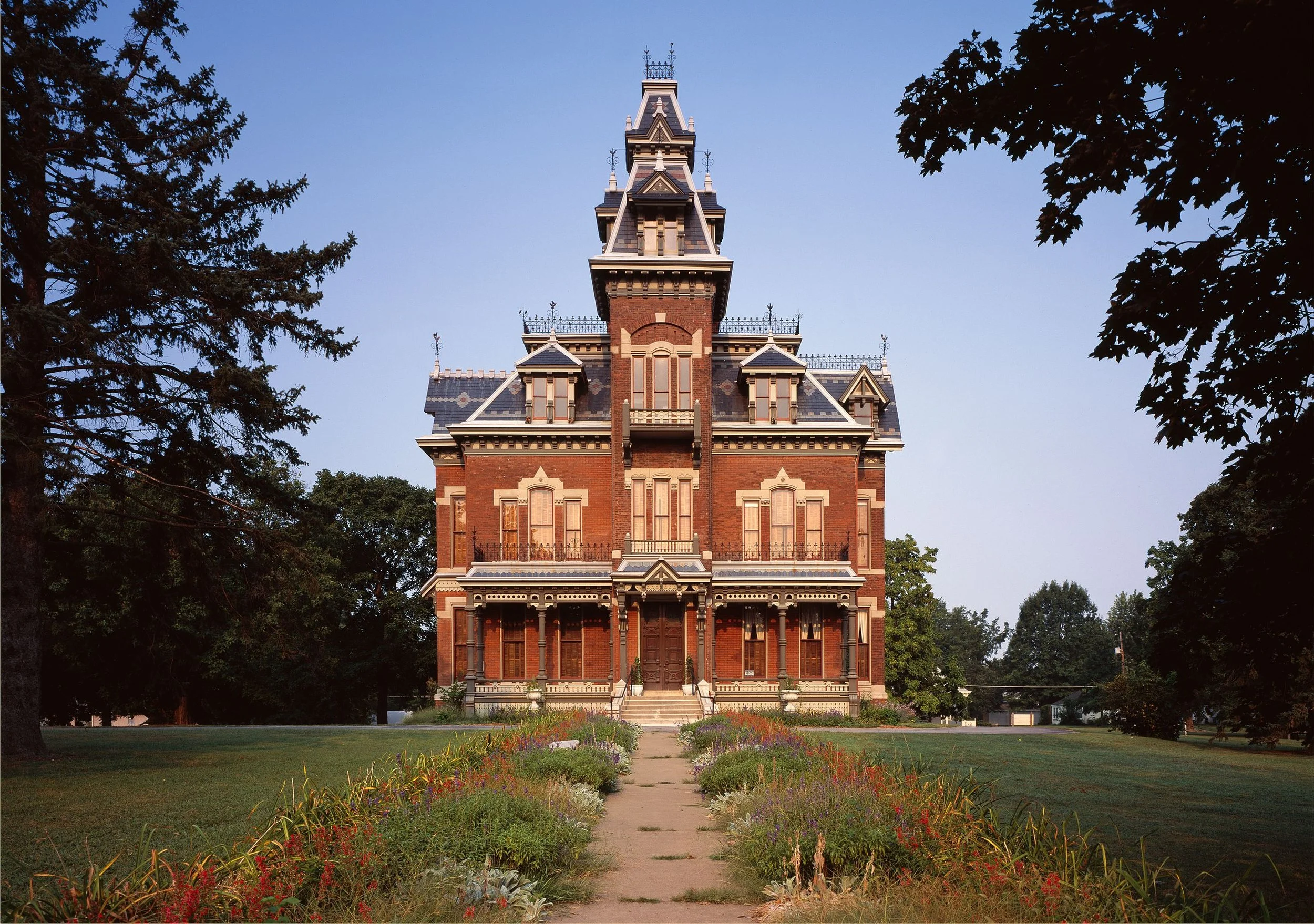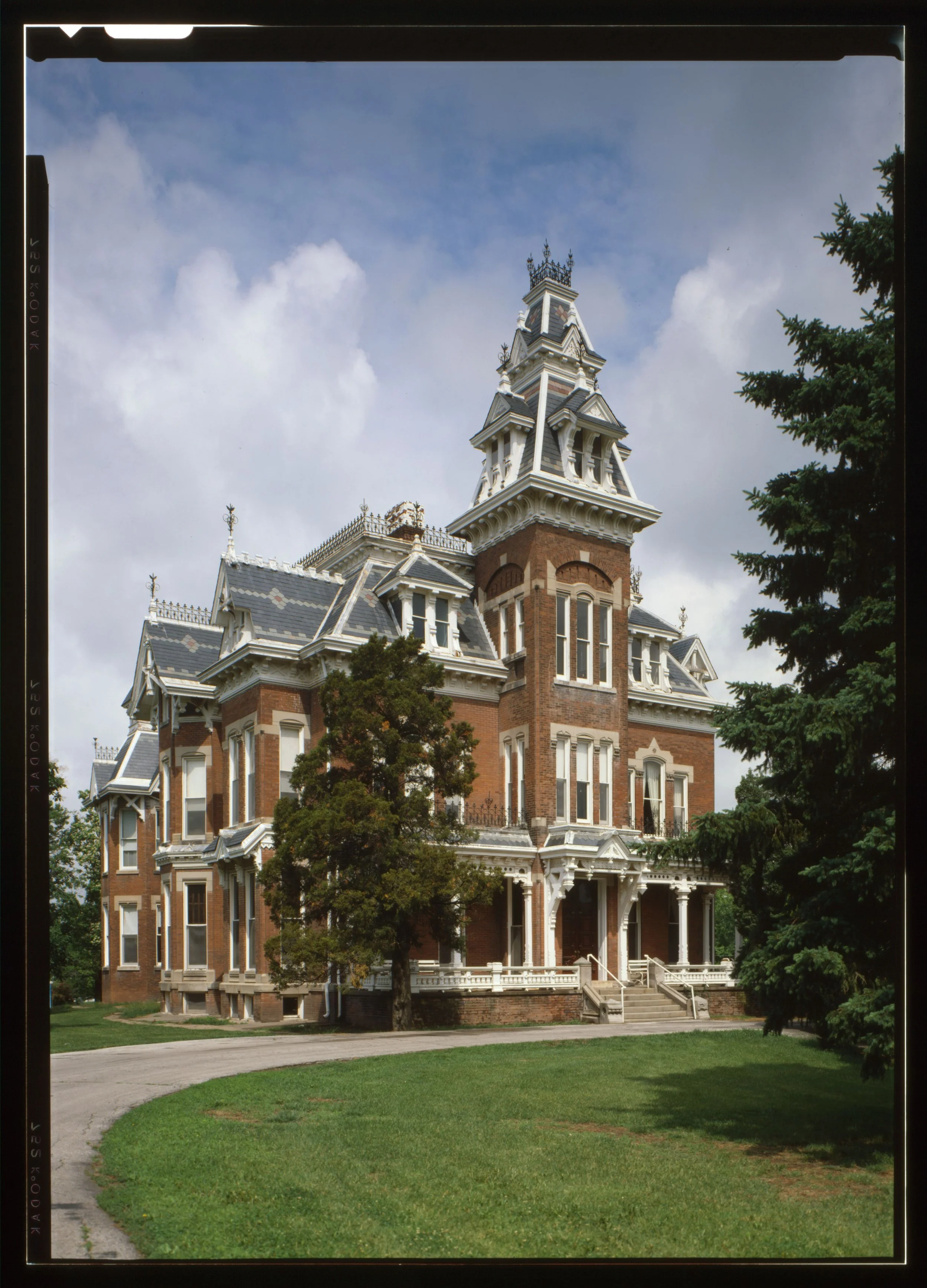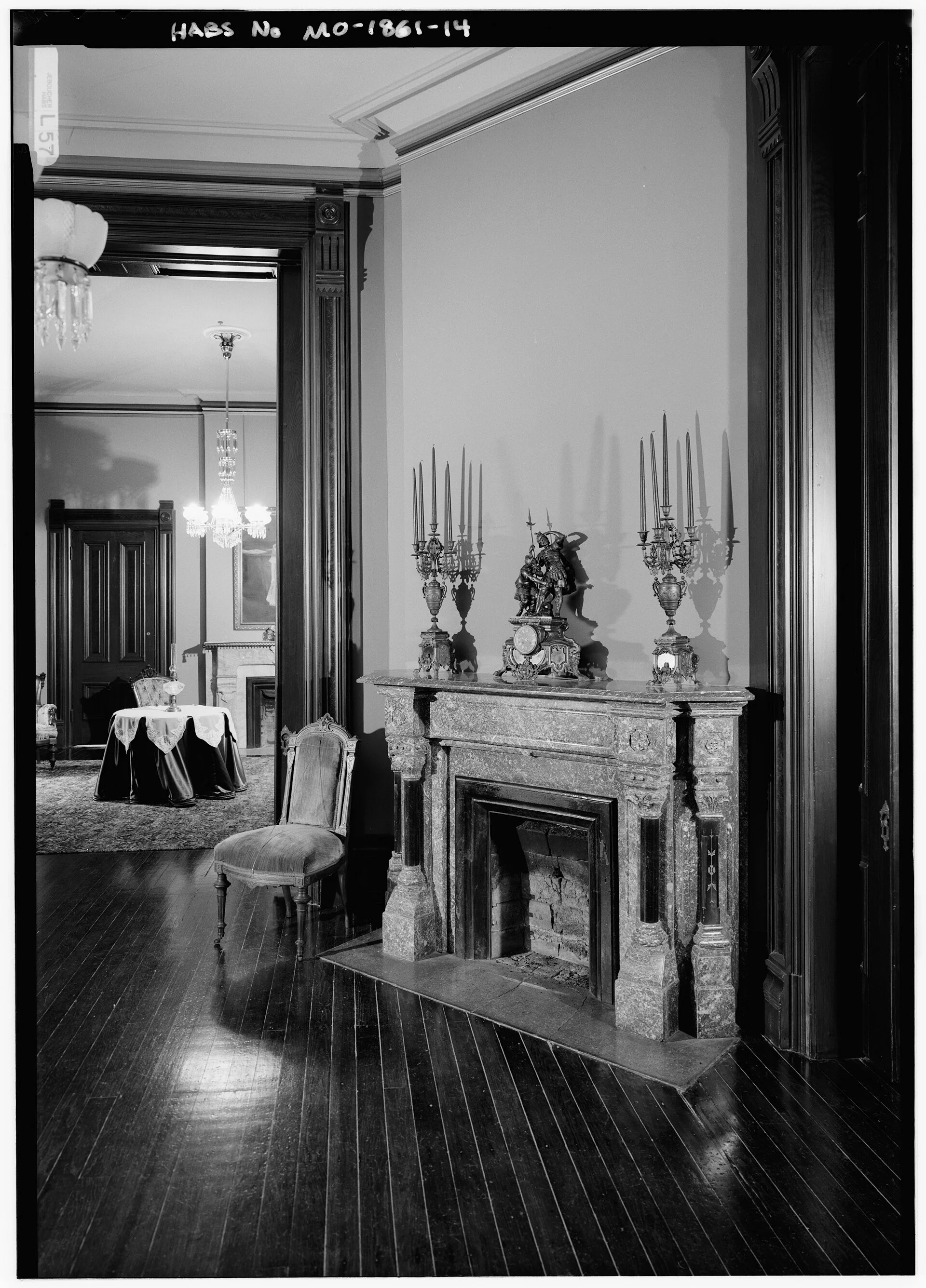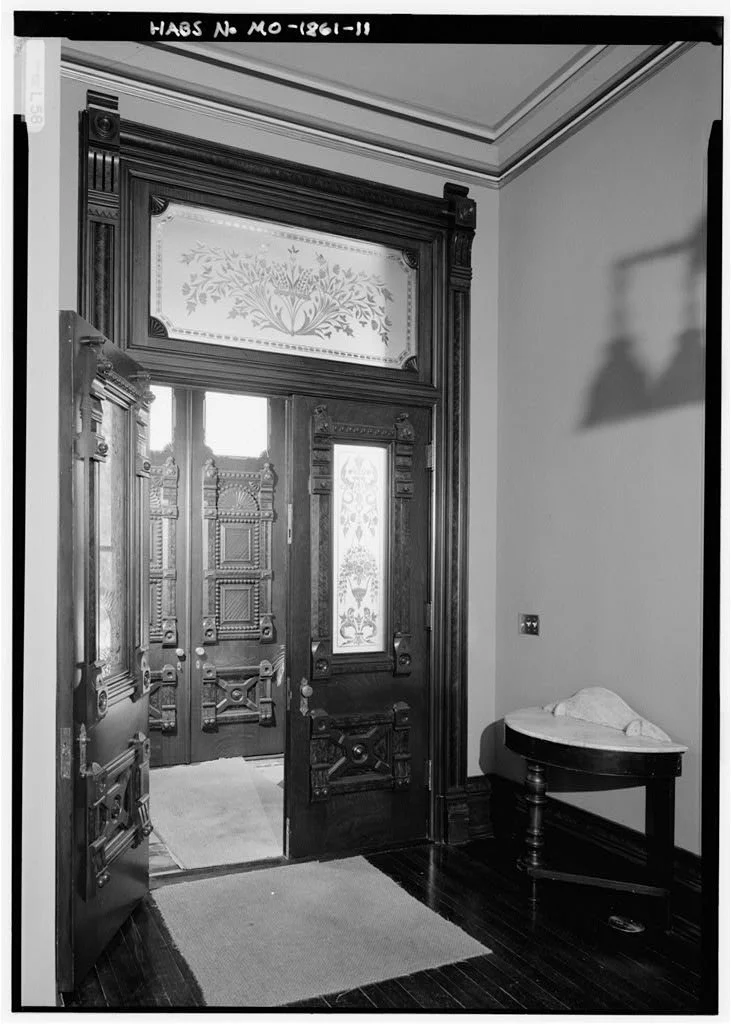The Story of Vaile Mansion
Courtesy LOC/Carol Highsmith.
The Vaile Mansion in Independence, MO is one of the most notable surviving examples of Second Empire architecture in the United States. Built in 1881 for Colonel Harvey Merrick Vaile and his wife, Sophia, the residence was designed by Kansas City architect Asa Beebe Cross and inspired by a large home the Vailes visited in Normandy, France.
Constructed of hand-pressed red brick with white limestone trim, the symmetrical façade features a central tower, mansard roofs, ornate bracketed cornices, and tall, narrow windows that emphasize its verticality. At the time of its completion, the Kansas City Times declared it “the most princely house and the most comfortable home in the entire west.”
Courtesy LOC Historic American Buildings Survey
The 31-room, three-story mansion boasted amenities rare for its time, including nine marble fireplaces, painted ceilings by European artists, gas lighting, speaking tubes, and indoor running hot and cold water supplied by a 6,000-gallon built-in tank. It was the first house in Jackson County with indoor plumbing.
A large wine cellar capable of holding 48,000 gallons supported Vaile’s vineyard and wine-making operation, while other outbuildings and landscaped grounds added to the estate’s grandeur. At its height, the property encompassed 630 acres and included orchards, gardens, fountains, and a greenhouse.
View of marble fireplace. Courtesy LOC Historic American Buildings Survey
Harvey Vaile, a Vermont-born lawyer and entrepreneur, made his fortune through ventures such as construction projects, investments in the Erie Canal, and U.S. mail contracts along the Star Route to Santa Fe. His political connections and success in business allowed him to host prominent guests, including senators and congressmen, at the mansion.
However, Vaile’s later years were overshadowed by the federal Star Route scandal. Though acquitted after two trials, the legal expenses were immense, and during this period his wife Sophia died of an apparent morphine overdose in 1883 after a battle with stomach cancer.
View of east entrance. Courtesy LOC Historic American Buildings Survey
Following Vaile’s death in 1894, the estate went through years of legal disputes among heirs. In the decades that followed, the mansion was repurposed for various uses, including as an inn, a private asylum, a mineral water bottling facility, and a nursing home. By the mid-20th century, the building had deteriorated and faced potential demolition. In the 1960s, Roger and Mary Mildred DeWitt purchased and began repairs, ultimately donating the property to the City of Independence in 1983.
Today, the Vaile Mansion is operated as a historic house museum by the Vaile Victorian Society.
Interested in learning more about historic homes in KC? You’ll love The Historic Mansions of Kansas City, a self-guided tour of 26 of KC’s most iconic residences!




